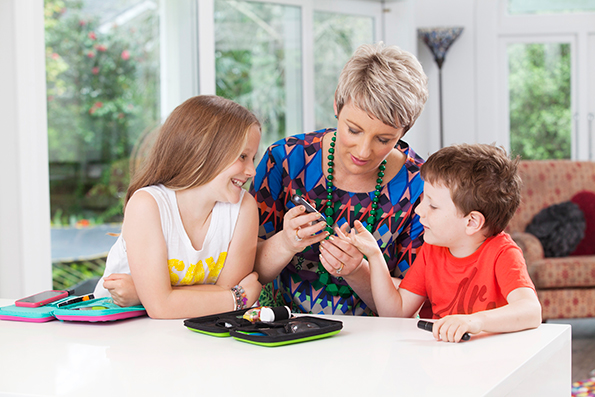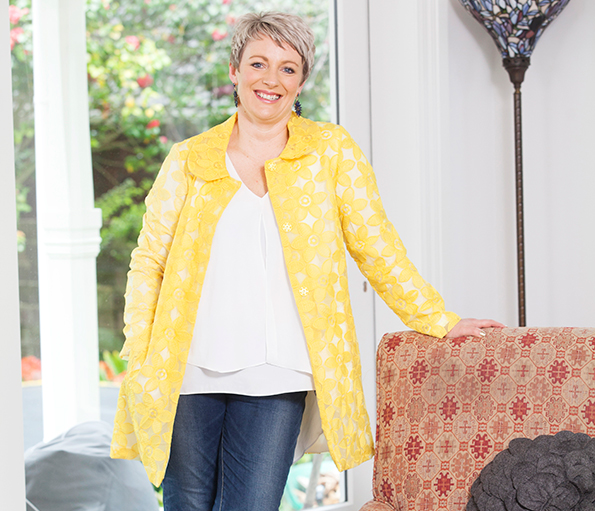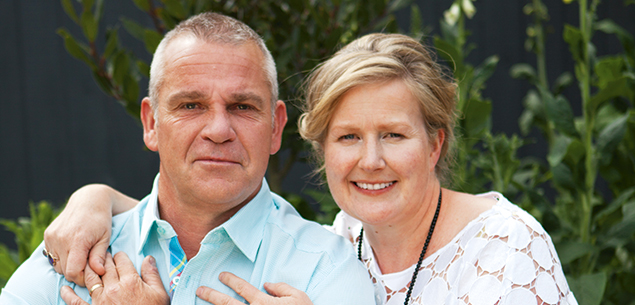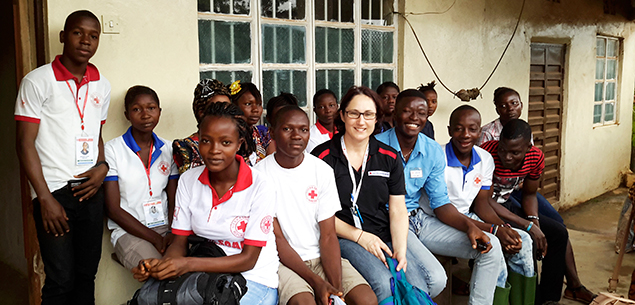For the last three years,the Weekly’s fashion editor Lisa O’Neill has been through a huge learning curve, and it is one that has nothing to do with hem lengths, spots versus stripes, or summer shoe styles.
In 2011, Lisa and her husband Mark were shocked to learn that their 11-year-old daughter Tilly has type 1 diabetes. Then, just six weeks ago, the devoted mother was dealt another blow when she was told her son Felix (7) has the same condition.
“Before Tilly was diagnosed, we didn’t know anyone with diabetes – it didn’t run in the family. We were oblivious,” says the Levin stylist (44), who is also mother to Oscar (15) and Ruby (13).
“The past three years has been filled with learning about needles, insulin and carbohydrate levels. It is a 24-hour job monitoring a child with type 1 diabetes as their blood sugar levels can change in a very short space of time. I now have two children with it and it’s only now that I’m slowly getting my head around everything.”

Lisa is grateful Tilly is able to help her younger brother if he has any questions about diabetes.
What’s even more challenging for Lisa is that she and all of her four children also suffer from coeliac disease, a digestive and autoimmune disorder resulting in damage to the lining of the small intestine when foods with gluten are eaten.
“We’re all on gluten-free diets. It eliminates a lot of processed foods, which is great,” says Lisa.
But it was the double-diabetes diagnoses that came as the biggest shock. Tilly was eight years old when she began complaining of being constantly thirsty and hungry.
“I knew something was wrong and took her to the doctor for a check-up. They measured her blood sugar level and it was 29 – normal being between 4 to 8.”

Tilly was eight years old when she was diagnosed with type 1 diabetes.
With such a dangerous reading, Tilly was rushed to hospital and stayed for a week while doctors tried to get her blood sugar levels down, and tested how much insulin she needed to function.
“It was like having a baby again and learning how to keep that baby alive,” explains Lisa. “Tilly needed daily insulin injections and I had never used a needle in my life. There was a lot to learn.”
Lisa also had to research what Tilly could eat. Without the insulin and a balance of a good diet and exercise, diabetes can cause a fall into a coma, which can be fatal. It could also mean major medical complications, including heart disease, kidney damage and blindness, in later years if treatment is not followed rigorously.
“I didn’t want to be the food police, because it’s normal for kids to want to snack and eat. But with diabetes, you do have to be on the ball all the time.”
Just as Lisa had grown used to dealing with Tilly’s diabetes, her youngest son Felix started showing those same worrying symptoms – hunger and thirst – but this time, Lisa knew what to do. She whipped out Tilly’s blood glucose meter to read Felix’s blood sugar level and discovered it was off the charts.
“It was serious, so we got in the car immediately and went to the hospital,” she recalls.
After undergoing tests, the results were as Lisa had suspected – Felix also had type 1 diabetes.

Both Tilly and Felix have to test their blood sugar levels eight times a day.
Lisa says there’s a stigma attached to children with type 1 diabetes, with many people thinking she must feed her children junk food all the time.
“Type 1 diabetes cannot be avoided. It’s genetic and there’s nothing you can do to prevent it or change it,” Lisa explains. “Type 2 is the sort that is typically brought on by lifestyle factors and can sometimes be reversed. People think that children with type 1 diabetes have just been exposed to a bad diet or that they will grow out of it. None of this is true. It is a permanent lifelong condition.”
Lisa takes comfort from knowing that Felix can rely on his older sister for advice. Or as Tilly, who loves to dance and is at the age where hanging out with her friends is everything, puts it: “I can help him and show him that it’s not so scary.”
Lisa shoots her children a big smile as she says,”It’s when the kids hit puberty that it becomes more difficult. Their hormones will interfere with the insulin.”

Our fashion editor reveals she and her four kids also have coeliac disease.
Tilly now wears a pump that injects the right amount of insulin into her system, whereas Felix still needs manual injections.
“Sometimes they feel they want a day off from diabetes,” says Lisa, sadly. “But they can’t. My two kids prick their fingers with a needle eight times a day and that takes a physical toll.”
As well as being the Weekly’s fashion editor, Lisa leads tours to China where she helps clients shop. She is grateful to Mark (46) for keeping their household under control while she’s away.
“My husband is amazing and he’s become an expert in diabetes,” she says.
More about diabetes:
More than 225,000 Kiwis have type 1 or type 2 diabetes. Every day 50 more people are diagnosed with the disease.
For more information, visit diabetesyouth.org.nz


